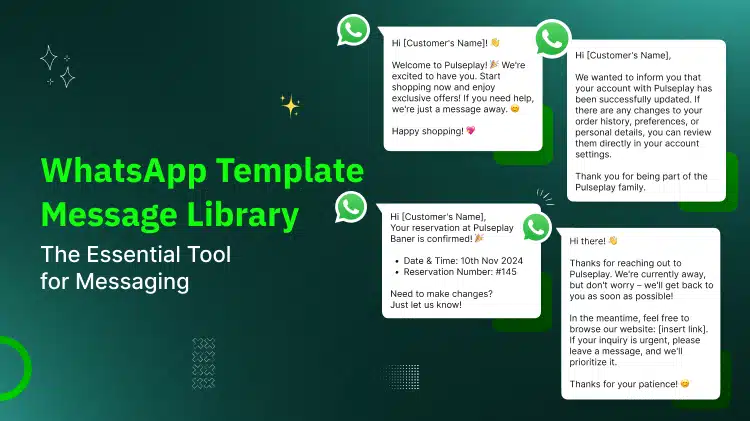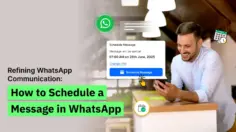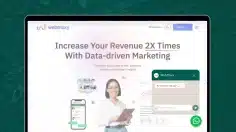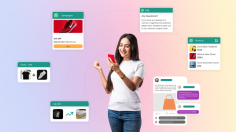WhatsApp Template Message Library: The Essential Tool for Messaging
In the digital world, customer engagement is the top priority. First, let us get well-versed with the concept of WhatsApp Template Message Library.
WhatsApp Templates are messages which are prewritten like pre built templates, based on a scenario with the option to automate personalization and tailor aspects.
These types of messages are known as Highly Structured Messages (HSM). In these templates, specific details are replaced. These are dynamic contents.
Refer to the below given example:
Hey there {{1}}, great to see you. You can expect your order of {{2}} to be delivered today.
{{1}} and {{2}} are the placeholders and will be replaced with specific details.
When joined with data, the dynamic content would compose a message like this:
Hey there Jim, great to see you. You can expect your order of Vitamin Serum to be delivered today.
Purpose for Using WhatsApp Template
WhatsApp Message Templates are the finest way to be in touch with your customers, share important details, or update customers.
There are 10 core types (categories) that WhatsApp Templates fall into:
- Issue resolution
- Reservation update
- Ticket update
- Alert update
- Appointment update
- Personal finance update
- Shipping update
- Account update
- Payment update
- Transportation update
These are the entire categories. There are several ways to use each of them.
You can send WhatsApp Template Messages to the customers about to interact with you.
You can use them to display as interactive buttons. This creates a simple, easy-to-use call to action that drives more engagement.
Connect With Your Customers Instantly Now!
Collaborate with WebMaxy WhatsApp Commerce for messaging!
Best Practices for WhatsApp Messaging Engage Your Recipients
1. Engage Your Recipients
You can directly message and engage your customers with this WhatsApp Template Message Library.
You can send interesting, valuable informative content. The message tone must be towards relationship building with your customer. It must not be a typical corporate one.
2. Avoid Overly Salesy Messaging
You need to avoid too many sales messages to your customers. Sending offer messages or sales-related messages more often will make customers uncomfortable chatting with you. Customers must feel pleasant, handling only personal messages.
3. Don’t Spam People
Never do any WhatsApp spamming activity using the message template facility. WhatsApp can ban or suspend your account if spamming is found with your account. You must not ask for the personal information of customers via a message template.
Some Important WhatsApp Message Templates
You can check here some WhatsApp Message Templates usable depending upon the end objective or business aspect.
1. Welcome messages
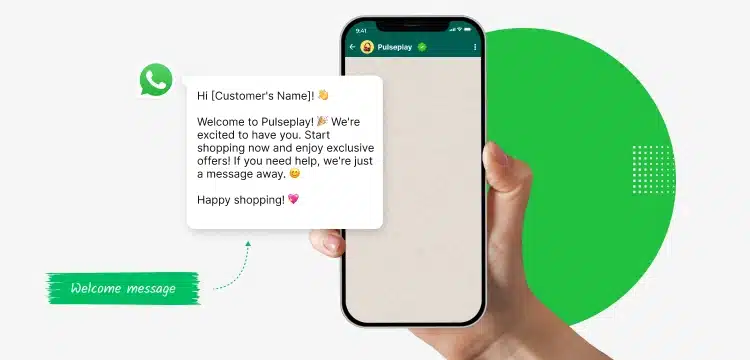
The first impression is the last! Use this template immediately after a customer book their first order. This will ensure that they are in the right hands and will experience a proper customer service process from the beginning only!
You can share a unique discount code to increase customer retention with this type of message template.
Example:
Hello there {{1}}! Thanks for choosing {{2}}. We are excited to have you with us. We would love to share this code that gives you 10% off your next order with us: {{3}}.
Just make sure to use it within {{4}} months before it expires!
2. Account updates
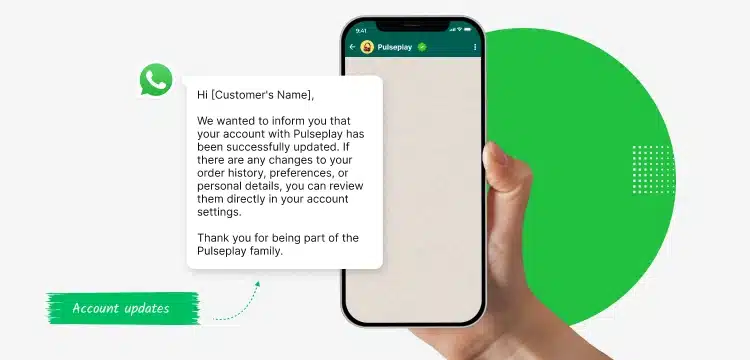
In case, if a customer changes an email address, password, or contact information, then this type of message is a must to confirm the update. This helps highlight security issues and is a reminder for the next time they come to log in.
Example:
Thanks for updating your {{1}}, {{2}}! If this is not you, please make sure you contact our customer support representatives on {{3}} as soon as possible. See you soon!
3. Auto-replies
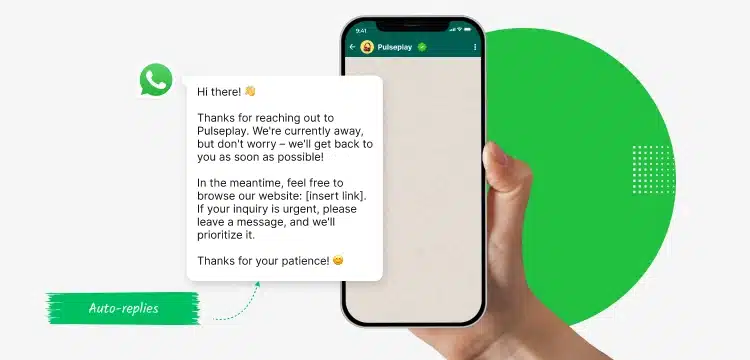
No company can offer 24/7 customer service, or it is available every day of the year. The setting up of an autoreply means the customer will get the required information at any time, without any manual assistance.
Example:
Hello {{1}}, thanks for contacting us. Unfortunately, we can’t reply right now as we’re closed and celebrating {{2}}. We always try and get back to you within 24 hours so you should hear from us soon!
4. Appointment reminders
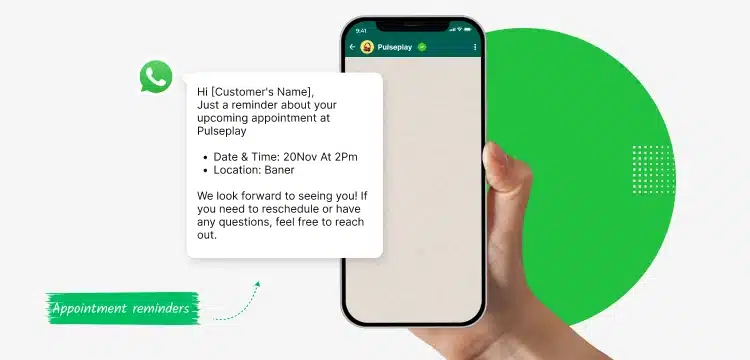
Businesses lose remarkable revenue every year on missed appointments. A quick reminder message can help customers be alert or remind them to cancel if required.
Example:
Hi there {{1}}, a quick reminder that you’re seeing {{2}} at the {{3}} office {{3}}. Don’t forget to turn up 15 minutes early so we can sign you up.
Engage and Connect With Your Customers By Effective Messaging
Use WhatsApp templates with WebMaxy WhatsApp Commerce
5. Promotional messages
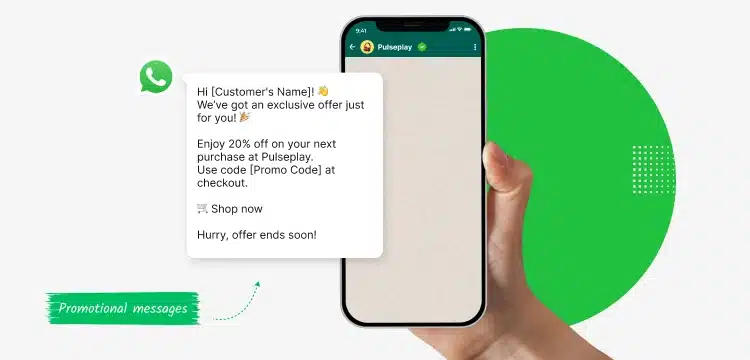
If you have an upcoming or seasonal sale, a short-term discount code, or an event coming up soon, promotional messages work wonderfully here.
Example:
We’re certain you wouldn’t want to miss out on this, {{1}}. It’s our Summer Sale! You’ve previously bought {{2}} and it’s going to be 30% off if you use code {{3}}! You’re welcome!
6. Issue resolution
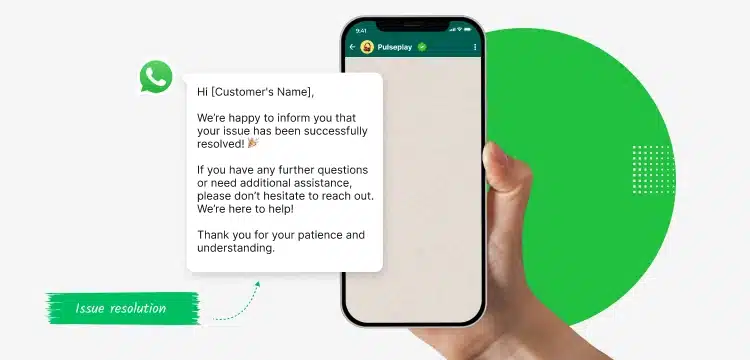
Technical issues may create a mess for the customer support team with lots of tickets and messages to address and sort out. A quick message can update the customer.
Example:
Hi {1}}, we wanted to let you know that we’re experiencing an outage now. We’re working on it and will update you when we’re back! Hold on, won’t be long!
7. Payment updates

Customers must get updates about their WhatsApp payment transactions in time. A quick update message can solve the purpose.
Example:
Hey there {{1}}, your subscription has been renewed as of {{2}} and payment was successfully taken. Thanks!
8. Event reminders
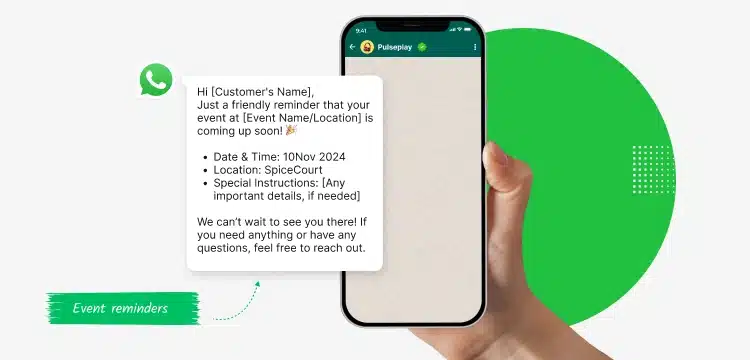
You can give a warmup reminder about an upcoming event, or no tickets available to show off about the event. A message giving a quick alert about the required action is suitable to use with this type of category.
Example:
Hi {{1}}, remember when you bought that ticket for the awesome {{2}}. Well, it’s happening in {{3}} days! Can’t wait to see you there!
9. Follow-up messages

This type of message is required to be sent if a customer is expected to take some action, which is not happening. So, a follow-up message is a must.
Example:
Hey there {1}}, thanks for browsing our WhatsApp store. We saw that you added {{2}} to your cart but didn’t checkout. Would you like to checkout now? We don’t want you to miss out!
10. Reservation updates
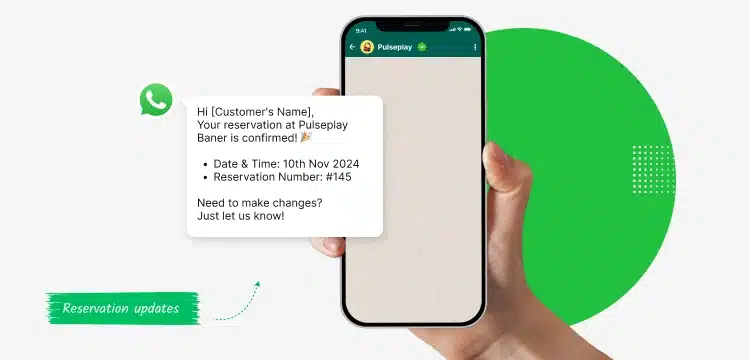
Similar to appointment reminders, this template helps customers to get updates on their reservation status, whenever it is required.
Hi {{1}}, thanks for updating your reservation on {{2}}. We’re happy to confirm the new time is {{3}}. See you soon!
11. Shipping updates
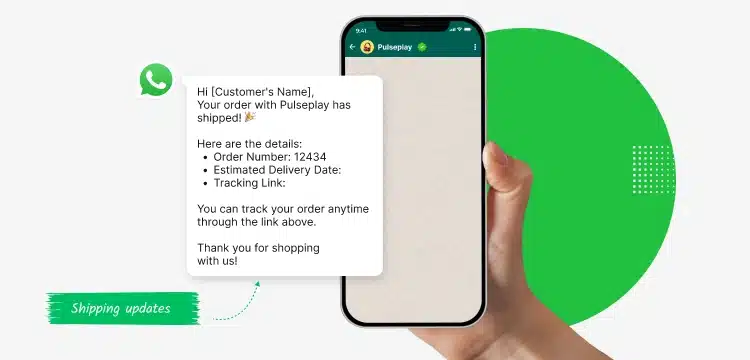
This type of message template entirely depends upon the delivery process of physical products with important details. They save customers’ time and effort by logging in each time to check the delivery status as well as lots of tickets for the customer service team, just to know the status of the delivery.
Example:
Great news {{1}}, your order of {{2}} has shipped! You should receive it within {{3}} days. We hope you enjoy it when it arrives. We want to hear all about it here {{4}}.
End Summary
WhatsApp Template Message Library saves a good amount of time. They can increase the revenue of your business. Using highly engaging, informative templates will not only save you time but also boost sales and retention.
WhatsApp Marketing is much easier when customer support is simplified, so you can use the most suitable template every day. If you can plan your template early, then WhatsApp will approve it in time. Study or analyze the customer journey and improvise it with a suitable message template. Do not spam your customers and follow the compliances.
To know more about such Message templates suitable for your business objectives, you can contact the WebMaxy team at: info@webmaxy.co.
Learn Authentic Use of WhatsApp Template Message Library
Leverage WebMaxy WhatsApp Commerce
Frequently Asked Questions
These are pre-approved, highly structured messages that businesses may use to communicate with customers on WhatsApp. One can say they are pre built templates. They include rich media like images, calls-to-action, and quick reply buttons.
Businesses can use WhatsApp Template Messages to:
– Send alerts and notifications
– Communicate important information like order updates and shipping details
– Maintaining brand value
– Save time
WhatsApp does not allow any spamming or harmful content, so businesses can not send WhatsApp Template Messages including:
– Threatening content
– Data collection
– Contests or quizzes
Businesses can create and manage templates using the Business Management API or the WhatsApp Business Manager. They can also use WhatsApp Template Message Library.
To use the WhatsApp Template Message Library, you can follow the below steps:
– Create a template
– In WhatsApp Manager, select Create Template under Message Templates in the sidebar. Then, you can:
– Browse the library by topic or use case
– Choose a template to create
– Add a name, language, and button details
– Click Submit
Adam Wilson
Adam Wilson comes with an experience of 12+ years in the IT industry. As a Customer Success Manager, he has been researching and trying to understand the customers’ behavior in different scenarios. He has also studied human psychology to relate it to the purchase journey of the customers. His published books on customer psychology and behavior have received many honors and awards from various enterprises.
